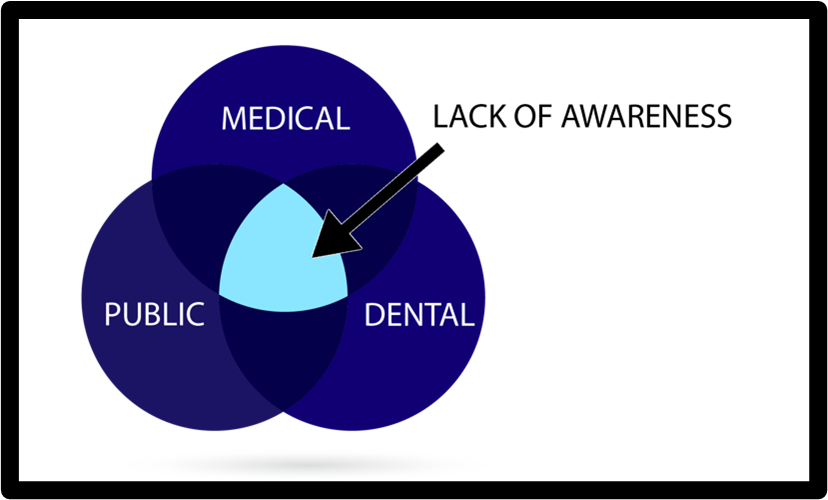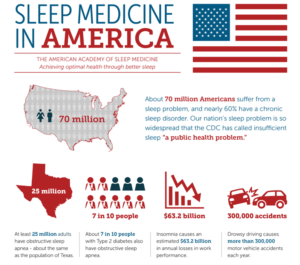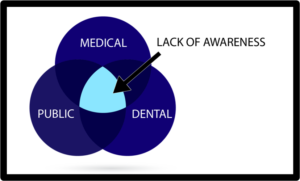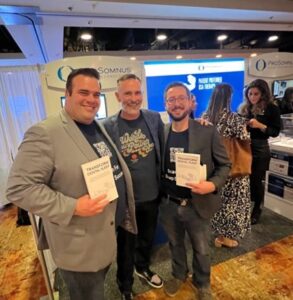
RISING TIDE RAISES AWARENESS
At this year’s AADSM meeting, there was a big hullabaloo about dentists, ENTs, and scope of practice. Device manufacturers pilloried each other, and impotent jabs were thrown via social media comments. In a nutshell, a successful ENT group was collaborating with dentists to treat patients with oral appliances. Sounds like every sleep dentists’ dream, right?
Not so fast. The ENT group had difficulty finding enough qualified, capable dentists to keep up with their patient demand. In some instances, they relied on trained medical assistants to capture dental records. This sent many dentists into a tizzy. As with many contentious topics, I can see where both parties are coming from. But I’m unqualified to hold court on scope of practice issues in specific markets. To me this entire episode shines a bright-ass light on a much bigger issue – lack of awareness.
MEDICAL LACK OF AWARENESS
Most physicians get little or no education about sleep in medical school. It’s just not on their radar. They don’t know to connect the dots between their patient’s complaints about being tired all day and the possibility of OSA. These docs don’t know what to look for, where to send patients, or what treatment options exist.
Of course, I’m speaking generally here. Even if you’re one of the 7,500 board-certified sleep physicians in the US, you’re likely not up to speed on all the latest literature regarding non-PAP therapies such as oral appliance therapy. I hear a lot of dentists blathering about “They don’t refer any patients to me, blah blah!” Dudes and Dudettes, they don’t know you exist. There’s a definite lack of awareness.
PUBLIC LACK OF AWARENESS
Joe and Jill Patient don’t know how sleep disordered breathing can negatively affect their health. The average patient has no idea that addressing sleep issues may eliminate their needs for certain medications, or that it might reduce daytime sleepiness, and recharge their sex drive.
In recent years, books like James Nestor’s Breath and Matthew Walker’s Why We Sleep have helped inform the public about the vital importance of sleep. Inspire’s marketing budget is in the hundreds of millions annually and have opened eyes to non-PAP treatments. Rising tides raise all ships, right?
Still, I’ll bet you a sliced watermelon and 17 bucks that if you randomly surveyed 100 people today, those that have an inkling about SDB will have a myopic understanding of the treatment options. Most will likely know CPAP and some will know Inspire. Most won’t know anything about precision medical devices or oral appliance therapy. They’ll know almost nothing about effective surgical interventions or lifestyle changes.
DENTAL LACK OF AWARENESS
There are roughly 180,000 dentists in the United States. Like their medical counterparts, most received no sleep education in school. Despite the ADA’s Policy Statement urging dentists to screen patients for SDB, very few actually do. It’s frustrating. Just like it’s frustrating that many physicians don’t abide by their own practice parameters regarding OAT. But we shouldn’t villainize those people for their ignorance. Nope, we have to increase awareness.
 Most dentists don’t know how to screen. Nor do they have a handle on how to manage testing in their practices. They’re unsure which appliances to use, how to develop physician referral relationships, and how to bill medical insurance so the procedure is financially rewarding.
Most dentists don’t know how to screen. Nor do they have a handle on how to manage testing in their practices. They’re unsure which appliances to use, how to develop physician referral relationships, and how to bill medical insurance so the procedure is financially rewarding.
There are fewer than 3,000 members of the AADSM. Based on the stats in the infographic above, it’s evident we need more manpower to address this glaring problem. Today the intersection of the Venn diagram is “Lack of Awareness.” Through concerted coordination and collaboration, we can shine a light and boost awareness. Together.
 In trying to do my part, I wrote a book called Transform Dental Sleep: The Step-by-Step Guide to Doubling Your Sleep Patients, Increasing Physician Referrals, Simplifying Processes, and Improving Your Life. I’m a firm believer in controlling what you can control. You may not be able to lobby the payers to increase allowables or get the AASM to mandate that physicians follow the practice parameters. What you can control is how you spend your time, how you delegate to your team, how you interact with physicians, who is on your team, and what direction you want to take your sleep practice. I wrote this book to help you take control of the future of your sleep practice so you can do exactly what the book’s title says. Order your copy today.
In trying to do my part, I wrote a book called Transform Dental Sleep: The Step-by-Step Guide to Doubling Your Sleep Patients, Increasing Physician Referrals, Simplifying Processes, and Improving Your Life. I’m a firm believer in controlling what you can control. You may not be able to lobby the payers to increase allowables or get the AASM to mandate that physicians follow the practice parameters. What you can control is how you spend your time, how you delegate to your team, how you interact with physicians, who is on your team, and what direction you want to take your sleep practice. I wrote this book to help you take control of the future of your sleep practice so you can do exactly what the book’s title says. Order your copy today.




